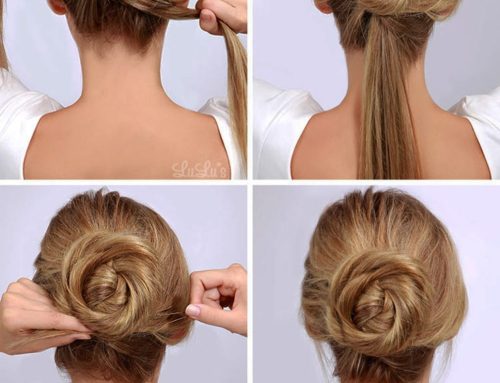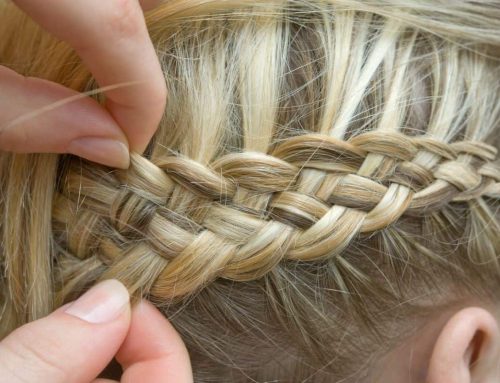I. Introduction
Wearing a wig can totally transform your look and boost your confidence, but how do you keep it securely in place? There are several methods to ensure your wig doesn’t slip, slide, or move. We’ll delve into these techniques, highlighting the pros and cons of each.
Let’s introduce Tiffany Pate, a seasoned pro in the hair industry. With over 17 years of experience, Tiffany has mastered the art of wig, weave, and hair extension installation. Her expertise doesn’t just stop at making these hairpieces look natural; she also focuses on maintaining healthy hair underneath. She’s the brain behind Pretty Professional Hair in Tampa, Florida, where she’s transformed countless clients, proving that the right wig worn the right way can make all the difference.
II. Choosing the Right Wig
Selecting the right wig is more than just picking a style or color that catches your eye. It’s about finding a wig that complements your lifestyle, fits comfortably, and looks as natural as possible. Lace wigs are a popular choice because they offer versatility and the appearance of natural hair growth at the scalp.
When choosing a wig, consider the material it’s made of. Synthetic wigs are affordable and low-maintenance, but they might not withstand heat styling or offer the most natural look. On the other hand, human hair wigs, while pricier, can be styled just like your own hair and can last much longer with proper care.
Think about your daily activities. Do you need something easy to wear and maintain, or are you looking for a wig that you can style differently for various occasions? The right wig should fit into your lifestyle seamlessly, whether you’re a busy professional, a fitness enthusiast, or someone who enjoys dressing up and changing looks frequently.
In summary, choosing the right wig involves considering its material, construction, and how well it fits your lifestyle. Tiffany Pate suggests that, beyond aesthetics, comfort and the health of your natural hair should be top priorities. After all, a wig should enhance your beauty, not compromise your comfort or hair health.
III. Preparing Your Hair and the Wig
Before diving into the world of wigs, getting your natural hair ready is crucial. Braiding your hair properly forms the foundation for a seamless wig installation. Start by creating small, tight cornrows that wrap around your head. These braids should be flat against your scalp to provide a smooth surface for the wig to sit on. If you have longer hair, ensure the ends are tucked and secured so they don’t poke through the wig.
Trying on the wig before sewing is like a rehearsal; it’s your chance to make any necessary adjustments. Place the wig on your head, aligning it with your natural hairline. It should feel comfortable, not too tight or loose. Observe how it sits on your braids, checking for any bulges or misalignments that could affect the final look.
IV. Sewing the Wig
A. Setup for Sewing
Securing the wig before sewing is like mapping out your route before a road trip. Use clips to hold the wig in place, ensuring it doesn’t shift as you sew. This step is crucial for long hair wigs, where managing the hair can get tricky. Adjust the wig until it’s perfectly aligned with your hairline, then trim any excess lace that extends beyond this line. This precision ensures the wig looks like it’s naturally growing from your scalp.
B. Sewing Process
The actual sewing is where the magic happens, turning a loose wig into a part of you. Starting from the back, near the nape of your neck, sew through the wig’s edge and into the braids, using a weave needle and thread. The stitches should be small and close together for durability and discretion. Work your way around your head, pulling the thread snug but not too tight, to avoid discomfort.
Focus on strategic points like behind the ears and along the hairline, where the wig needs extra security to mimic the natural contours of your head. These areas are critical for maintaining the wig’s position and ensuring it moves naturally with you, creating an illusion of real hair.
In the journey of wig sewing, remember, it’s not just about attaching a wig to your head. It’s about crafting a style that feels as good as it looks, blending artistry with technique to create something uniquely yours. Tiffany Pate always emphasizes the importance of making the wig feel like a part of you, ensuring comfort and confidence in your new, stunning hairstyle.
V. Aftercare and Maintenance
Caring for your wig is just as important as choosing the right one. Whether it’s synthetic or made of human hair, regular washing and conditioning are key to keeping it looking fresh and natural. Synthetic wigs require gentle care; use a shampoo and conditioner specially formulated for synthetic fibers to prevent damage. Human hair wigs, however, can handle more robust products and benefit from deep conditioning treatments to retain moisture and luster.
Regular maintenance is not just about keeping the wig clean; it’s also about preserving its style and texture. Detangling with a wide-tooth comb or a wig brush can prevent knots and preserve the wig’s integrity. For synthetic wigs, avoid heat and harsh chemicals, while human hair wigs can be treated with heat styling tools and hair products, albeit sparingly to avoid buildup.
Tiffany Pate advises, “Treat your wig like your own hair; with love, care, and attention. Regular maintenance can extend its life and keep it looking as natural as the day you bought it.”
VI. Styling Your Wig
Styling your wig should be a fun and creative process. Blending the wig’s edges with your natural hairline can be achieved with careful trimming and the use of styling products to smooth the transition. For a natural look, use a fine-tooth comb to gently pull a few strands of your natural hair through the lace front, blending it with the wig.
When it comes to styling, synthetic wigs often hold their style longer but are less versatile than human hair wigs due to their inability to withstand high temperatures. Human hair wigs, conversely, can be styled just like your own hair, using heat tools and products to achieve the desired look. However, it’s important to use heat protectant sprays to prevent damage.
VII. Night Care
Protecting your wig at night is crucial to prolonging its life and maintaining its style. Wearing a satin cap can prevent friction and tangling, which can lead to breakage and a loss of the wig’s natural sheen. For those who find caps uncomfortable, a satin pillowcase is an excellent alternative, providing a smooth surface that allows the wig to move freely without catching and tangling.
Tiffany Pate emphasizes the importance of night care, “Just like you wouldn’t go to bed without tying your natural hair, you shouldn’t neglect your wig at night. Protection is key to keeping it in top condition.”
In summary, taking care of your wig is an ongoing process that requires regular attention and care. By following these guidelines for aftercare, styling, and night care, you can enjoy a beautiful, natural-looking wig that lasts.
VIII. Advanced Wig Care Techniques
Navigating the world of wig care can be daunting, but with the right tools and knowledge, it becomes a manageable task. Professional stylists like Tiffany Pate often use specialized tools such as wig steaming devices to restore the wig’s original style or to introduce a new style without damaging the fibers. For instance, steamers can be used to add curls or straighten both synthetic and human hair wigs, providing versatility in styling.
Knowing when to seek professional help is crucial. While daily maintenance can be done at home, certain conditions like severe tangling, matting, or the need for a significant style change should be handled by professionals. They have the expertise and equipment to rejuvenate a wig without compromising its quality.
IX. Long-term Storage Solutions
Proper storage is vital to extending the life of a wig. To avoid tangling and maintain the shape, wigs should be stored on a wig stand or mannequin head. This prevents the fibers from becoming crushed or matted. For long-term storage, keeping the wig in a silk or satin bag can protect it from dust and moisture. Avoid plastic bags as they can lead to dryness and static.
Tiffany Pate recommends, “Store your wigs in a cool, dry place away from direct sunlight to prevent color fading and fiber damage.”
X. Expert Q&A
In this section, experts answer common questions like how often to wash the wig, the best way to dry it, and how to choose the right products for different types of wigs. For instance, Tiffany Pate advises washing human hair wigs after about ten wears, but synthetic wigs might need less frequent washing depending on usage and exposure to the environment.
XI. Conclusion
Securing and maintaining a wig requires attention to detail and a consistent care routine. From choosing the right wig and preparing your natural hair for installation to daily maintenance and proper storage, every step contributes to the longevity and appearance of the wig. By employing both at-home care techniques and utilizing professional services when necessary, you can ensure your wig remains in top condition for as long as possible.
Remember, the essence of effective wig care lies in regular maintenance, gentle handling, and appropriate storage, ensuring your investment remains timeless and beautiful.
Additional Topics
Alternative Attachment Methods
Securing a wig properly not only ensures comfort but also enhances its natural appearance. Beyond sewing, there are various methods like clips, adhesives, and elastic bands each with its own set of advantages. Clips offer a quick and easy way to attach the wig without much preparation, making them ideal for temporary wear. Adhesives, such as wig glues and tapes, provide a more secure hold, suitable for long-term wear but require careful application and removal to avoid damaging the wig and the scalp. Elastic bands sewn into the wig can offer a comfortable, secure fit and reduce the tension on the scalp.
Tiffany Pate notes, “Choosing the right attachment method depends on the individual’s lifestyle, the type of wig, and the duration of wear. It’s about balancing ease of use with the need for a secure fit.”
Dealing with Common Wig Problems
Wig wearers often face challenges like slipping, itching, or scalp irritation. To prevent slipping, ensure the wig cap fits snugly and use grip bands or adhesives for extra security. Itching can be mitigated by wearing a wig liner or cap beneath the wig to protect the scalp and reduce friction. For those with sensitive skin, hypoallergenic materials and regular cleaning of the wig can alleviate scalp irritation.
Customizing Wigs for Personal Fit
A well-fitting wig can make a significant difference in comfort and appearance. Some wigs come with adjustable straps or can be custom-fitted by a professional to ensure they conform perfectly to the wearer’s head. Personalizing the hairline, by plucking hairs from the front of the wig, can create a more natural look.
Creative Styling and Transformation
Wigs offer the freedom to experiment with various hairstyles without altering natural hair. Techniques like curling, braiding, or updos can transform the wig’s appearance. Accessories like headbands, clips, and hats can also add flair and personalization to a wig style.
Insights into Wig Trends and Fashion
Wig trends are continually evolving, with innovations in colors, materials, and construction. Currently, there’s a preference for natural-looking wigs that offer versatility in styling. Experts predict that future trends will lean towards sustainable materials and more advanced technology in wig construction to enhance comfort and realism.
Tiffany Pate reflects, “The wig industry is always advancing, with trends often mirroring broader fashion movements. Staying updated with these changes can provide fresh ideas for personal styling and wig care.”




